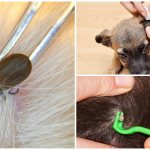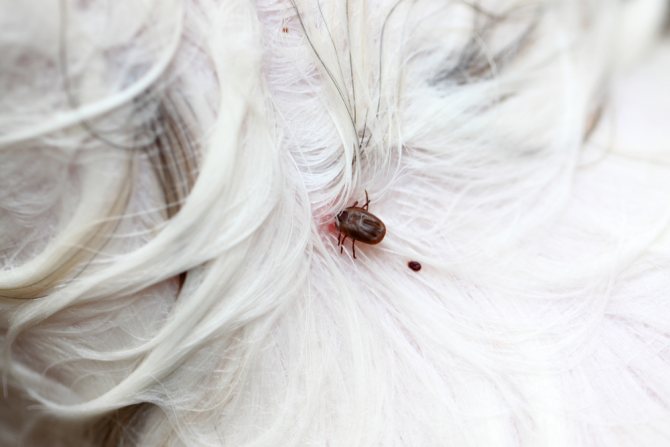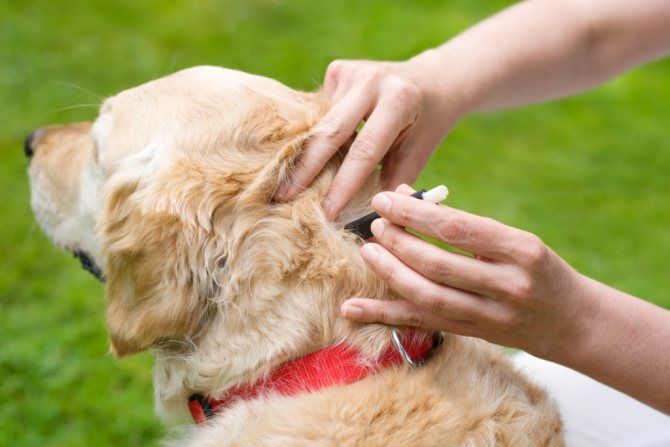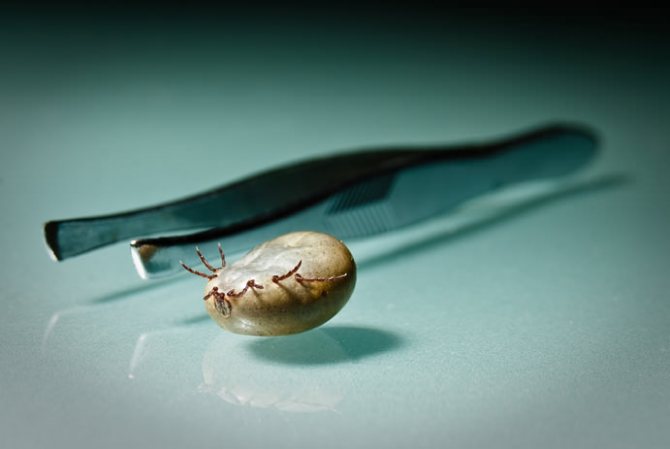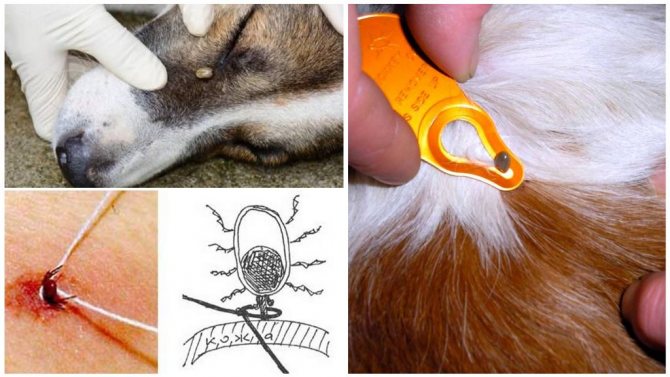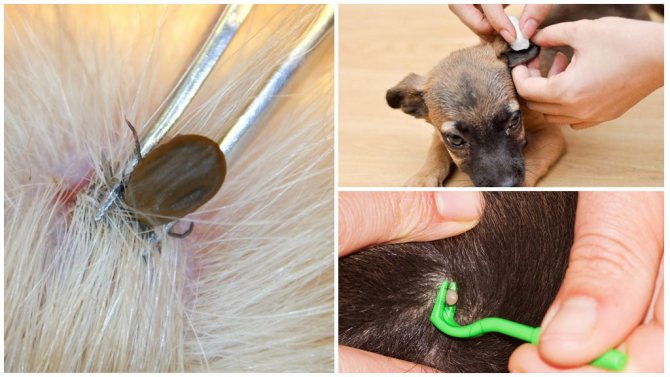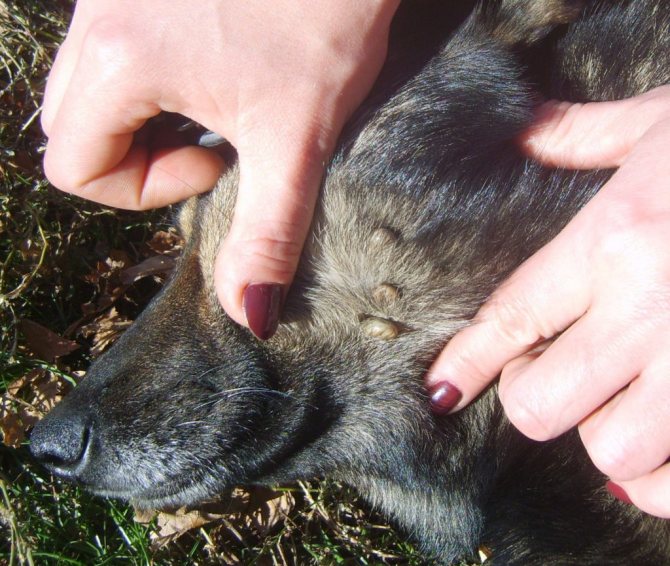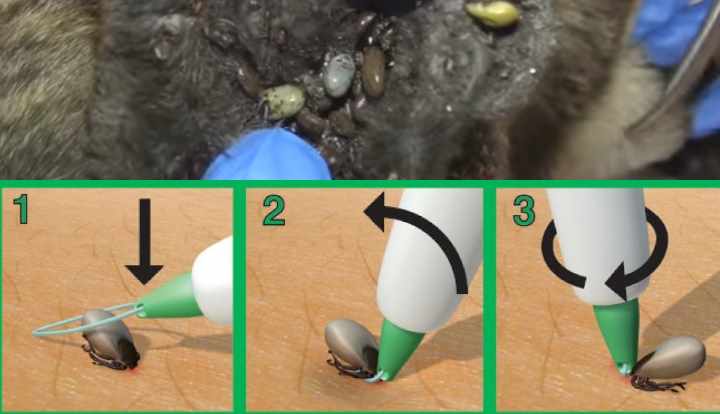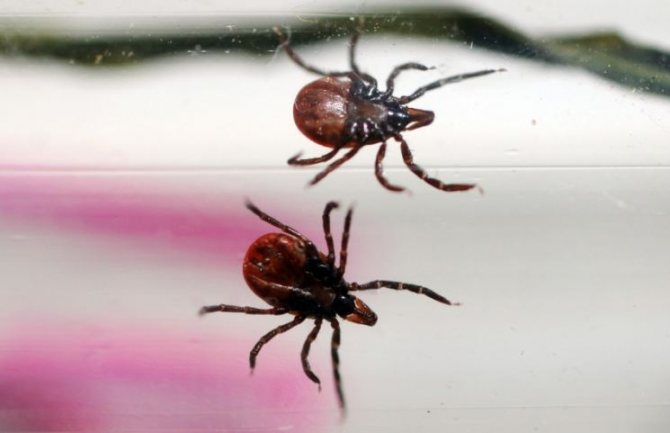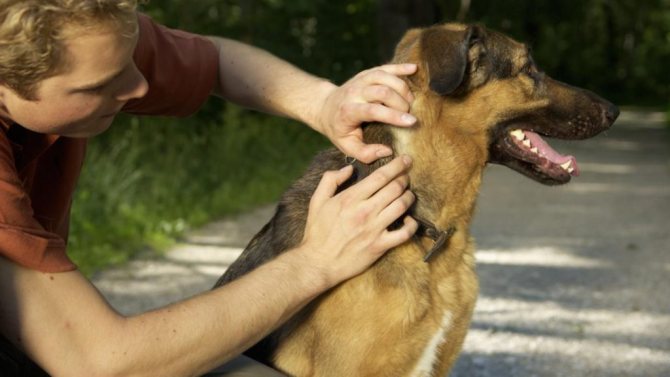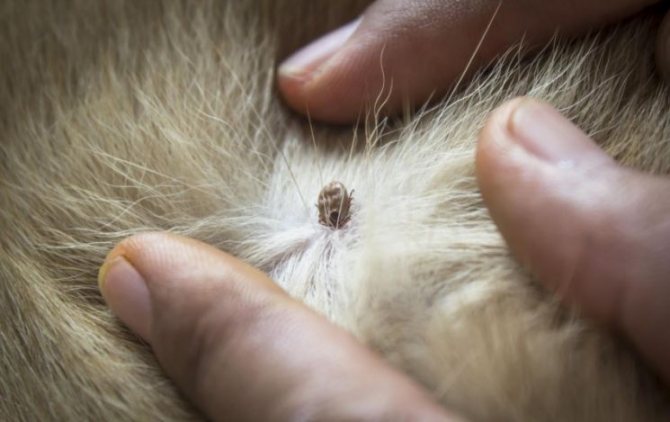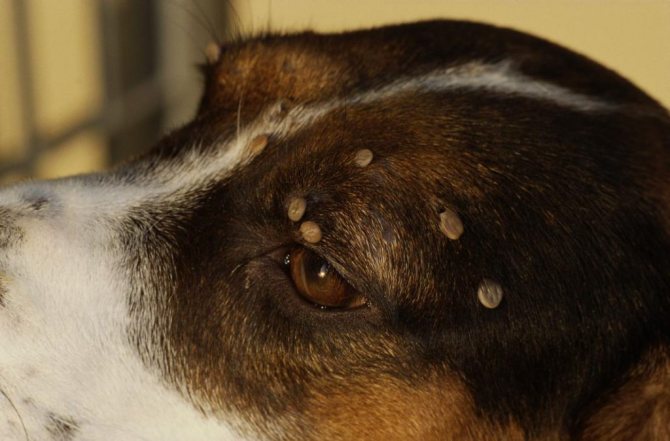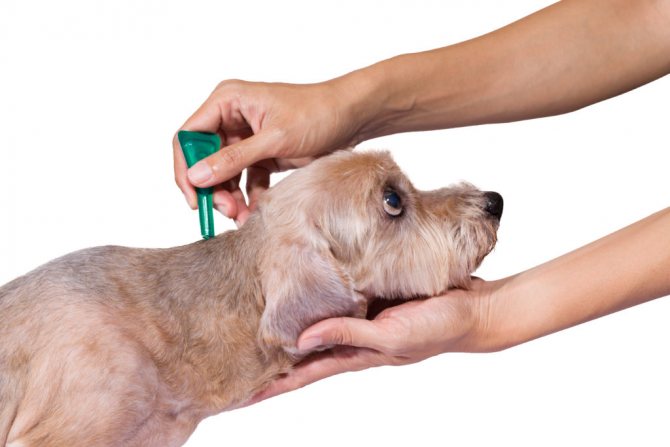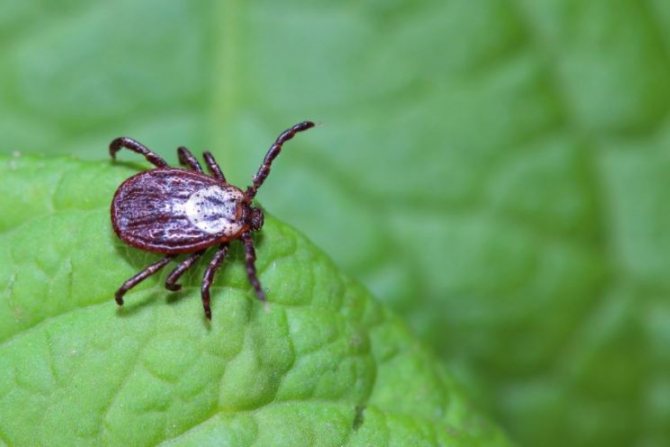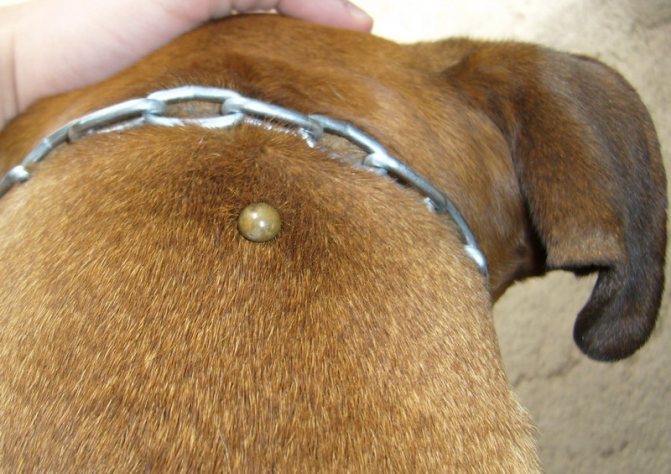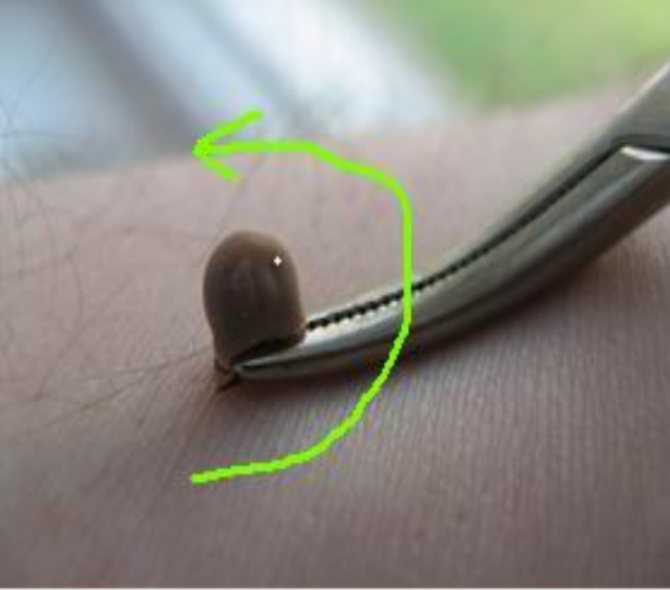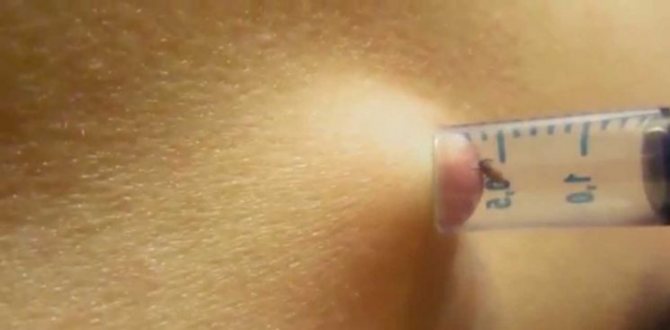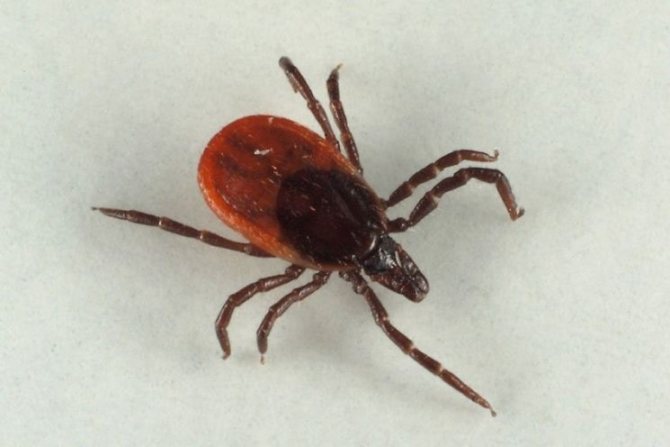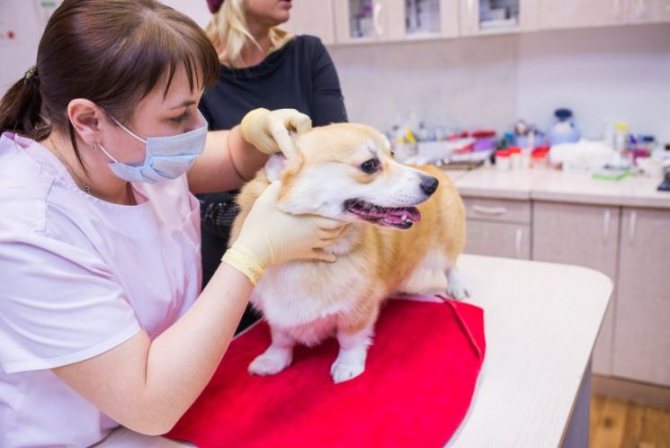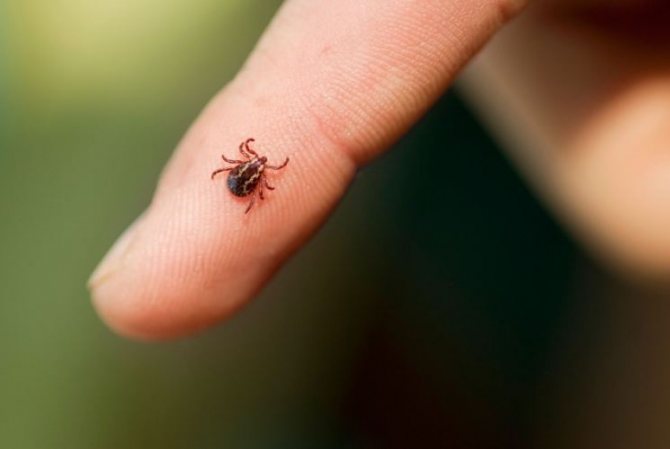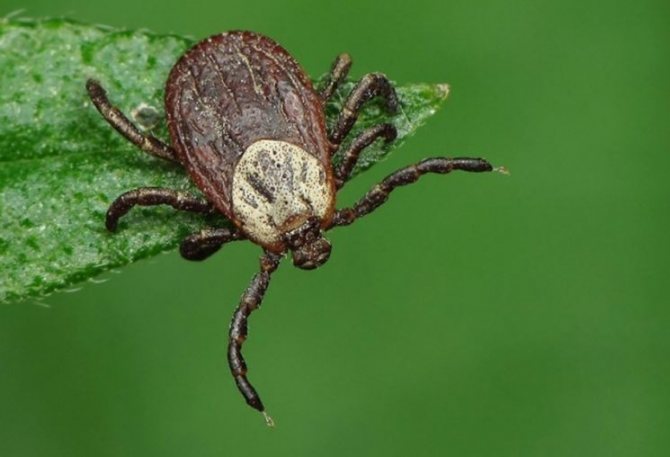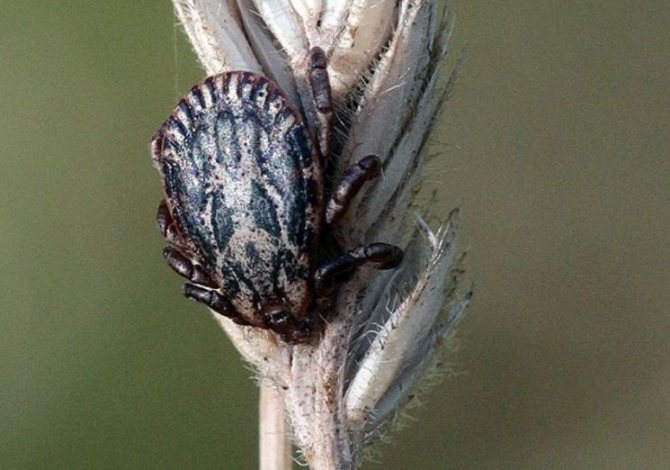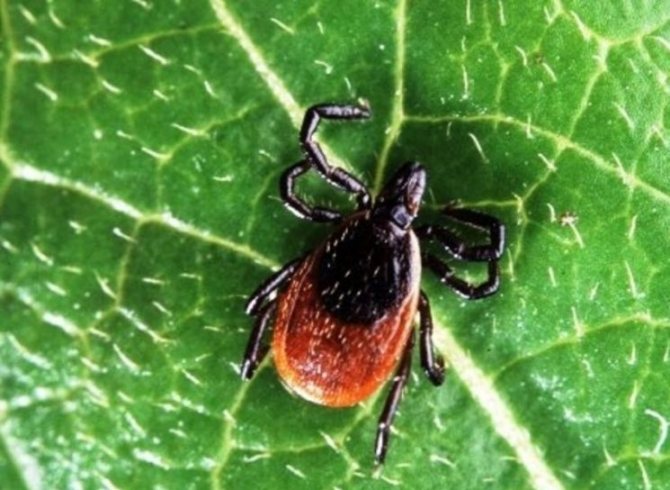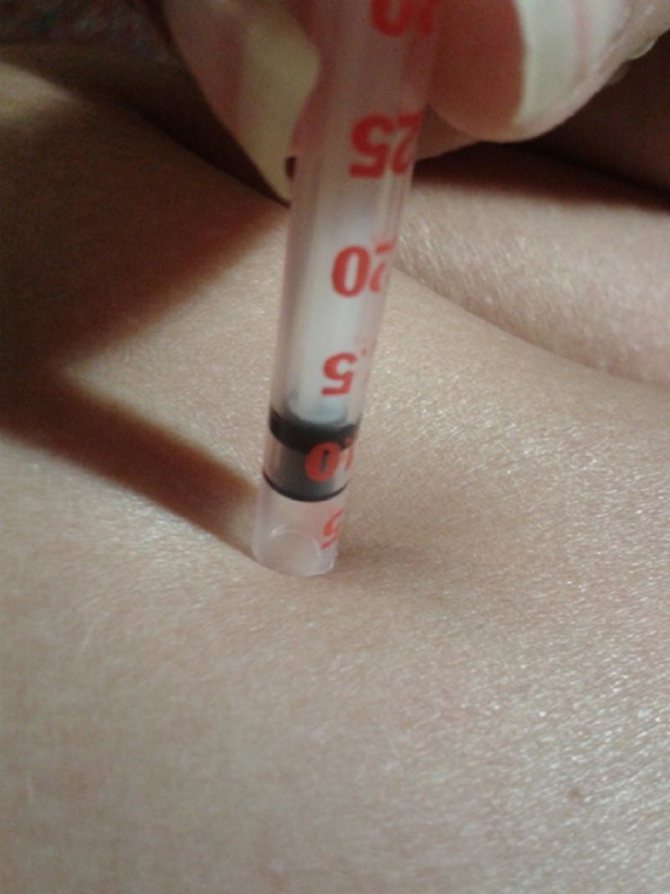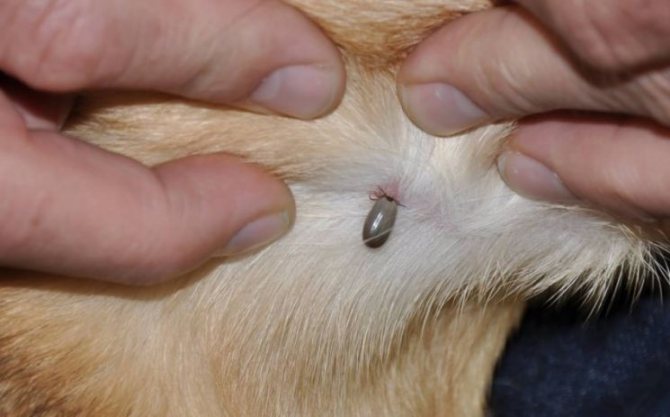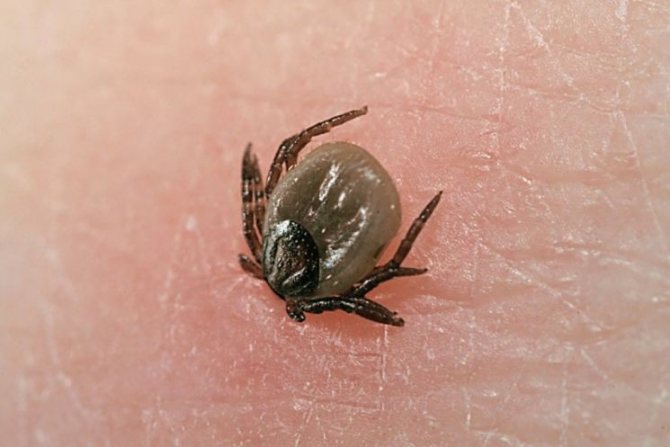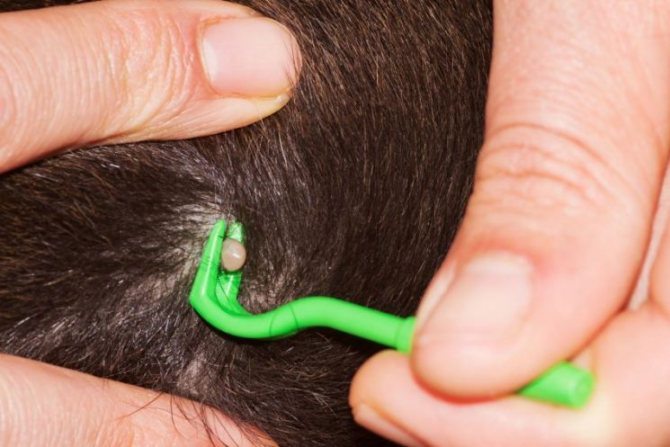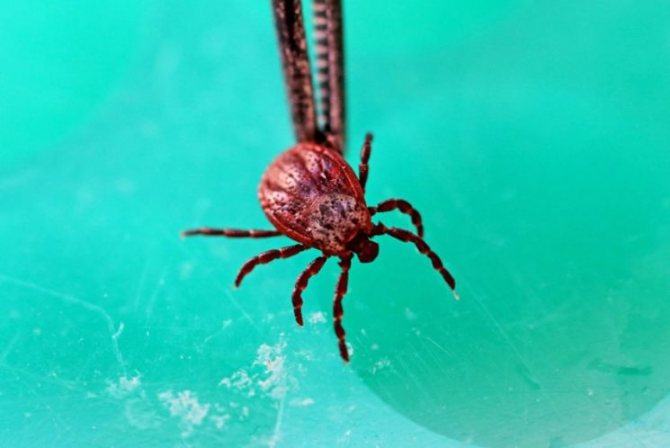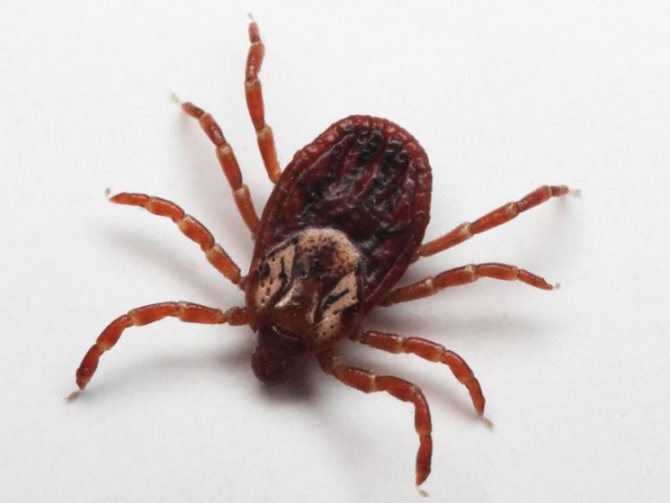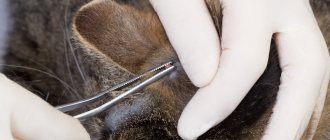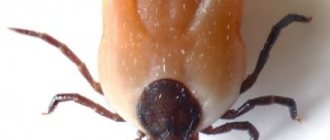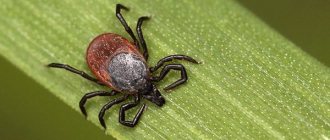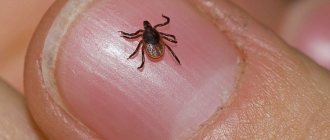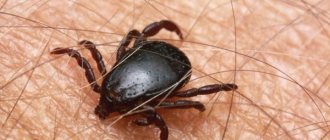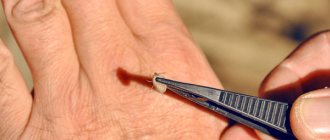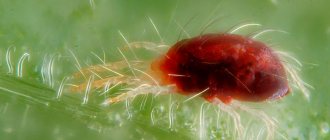From early spring to autumn, dogs are at particular risk of tick bites. The latter are carriers of such serious diseases as piroplasmosis (babesiosis), Lyme disease, anaplasmosis. Parasites have long become inhabitants of cities, and there is a danger of meeting them anywhere for walking animals. Therefore, every owner should know how to remove a tick from a dog and provide first aid.
Danger of ticks in a dog
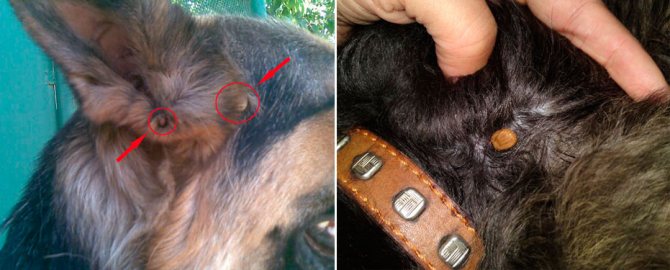
Almost all types of ticks from the Ixodid and Argasidae, which feed on blood, are universal carriers of various pathogens of infectious diseases through a bite. Each type of parasite has its own specific pathogens, depending on the type of victim on which they parasitize. Ticks that attack humans carry such dangerous diseases as encephalitis and Lyme borreliosis, and ticks in dogs infect animals with piroplasmosis, as the most dangerous disease, since even if treatment is successful, up to 90% of animals die.
This is mainly due to late seeking medical help. If this is done on time, then there are chances of a full recovery. Even the slightest delay can result in various irreversible complications and a long period of treatment.
The most vulnerable to piroplasmosis are purebred dogs, hunting dogs, puppies and elderly individuals. Even a single tick bite can lead to unpredictable consequences.
On a note! Naturally, not every tick that bites a dog infects it with a dangerous disease. Since there is a risk, it is better to take the tick for analysis. Dogs react calmly to the removal of the tick, so there will be no problems with removing the parasite. Unfortunately, this is not always possible, since the disease passes very rapidly and the tick must be tested for analysis as soon as possible.
When a tick bites a dog, the causative agents of diseases, namely babesia, along with the secretions of the parasite, enter the animal's blood. After that, they take root in the red calves and destroy them. As a result, the animal's hemoglobin level drops and within a week the animal falls into a coma and dies. At the same time, during this period, the animal suffers very hard. The clinical picture of lesions by piroplasmosis:
- Already after 2-4 days, although maybe after two weeks, the effects of the disease are manifested in the behavior of the dog.
- The dog loses its appetite and gives up its favorite treats and food in general.
- Her movements become stiff, sluggish and reluctant, as if all her muscles ache.
- A high temperature rises, about 42 degrees, against the background of chills. The animal breathes frequently and heavily.
- The dog begins to nausea and vomiting, against the background of an intestinal disorder.
- The dog tries to retire and not show himself to others, refusing to communicate.
- At the same time, the mucous membranes change their color to yellow or turn pale.
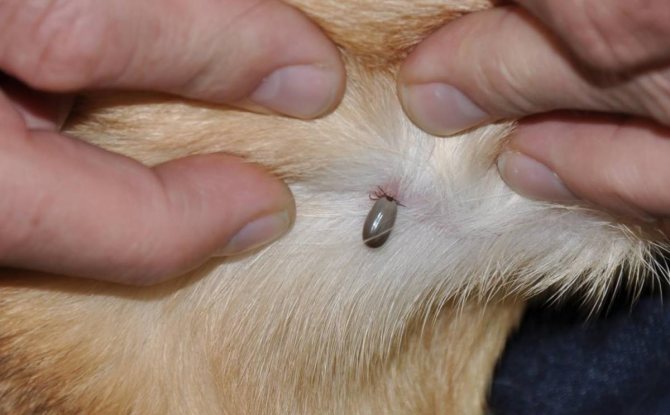

But the very first sign is a changed color of urine, which has a rich dark shade, similar to coffee or strong tea. If it was possible to pull out a tick from the dog, then it must be observed for 1 week. At the slightest change in the behavior of your pet, you should immediately contact the veterinary clinic.
Attention! A tick, when bitten, can infect a dog not only with piroplasmosis, but also with other equally dangerous ailments, such as rickettsia ehrlichiosis, hemobartonellosis microbes, and Lyme borreliosis. Some of the ailments can also threaten the dog's owner. Therefore, protection from ticks and constant examination of the animal for the presence of parasites is the key to excellent everyday well-being, both of the dog and its owner.
Tick features
The tick refers to blood-sucking insects that are capable of attacking any living creature, including humans. If successful, he gets drunk with the blood of the victim and grows significantly in size. One of the main features of this pest is the presence of strong jaws and strong legs. With their help, it is securely attached to the skin, and it is not so easy to remove it.
In addition, the predator has the following features:
- Insect saliva contains a special substance that acts as an anesthetic. Because of this, the tick bite is absolutely painless.
- These representatives of the fauna have filled the whole world. They can be found on any continent and in almost all countries. Scientists know more than 48 thousand species of ticks - a record among all living things.
- During their lives, they move little and are able to wait for their victims for a long time.
- Male ticks die immediately after mating with a female, but females survive and tolerate even the most extreme conditions.
- These insects like shady places with high humidity and do not show their activity during hot weather.
This video explains how to properly remove the tick from the skin:
How, when and where to look for a tick in a dog
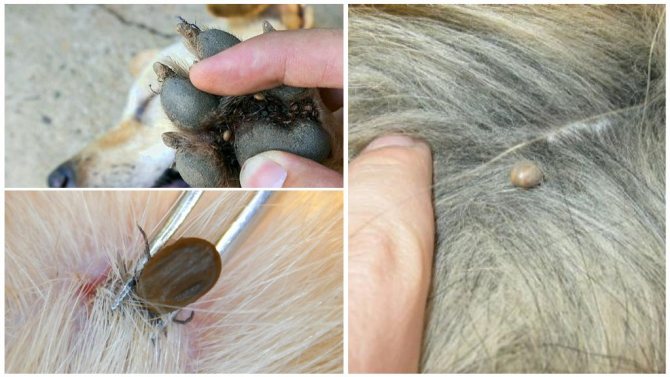

Finding a tick in a dog is not so easy, given how thick its coat is and what a small parasite. It is important to know where to look and when to look. The tick, when it is saturated with blood, will disappear by itself, but during this time it can transfer to the animal the whole bouquet of harmful microorganisms. Therefore, it is very important to find the parasite and remove it, and this must be done correctly. Simple rules will help you get rid of the parasite in time. For example:
- First, the animal must be examined every day by feeling its fur.
- The tick, clinging to the animal's fur, looks for places where the skin is thinnest and the capillaries are close.
- Immediately after a walk, it makes no sense to examine the dog, since it is very difficult to find a hungry tick in the thickness of the fur because of its small size.
- Only after the tick adheres to the body of the animal and fixes itself, and then increases in size, it can be found on the body of the dog and pulled out.
- From the moment of the first walk to the moment of the next walk, this is exactly the interval during which the tick will already drink the pet's blood, but not earlier than 3 hours after the walk.
Naturally, this means everyday walks.
The animal has areas where inspection should be done first. These are areas such as the muzzle, the area of the ears and neck, the inner sides of both the front and hind legs, the abdomen, chest and groin area.
On a note! When probing problem areas, you should pay attention to the characteristic tubercles, which were not present in these places before. It might just be a tick.
What if the head remains in the dog's body?
It is not always possible to completely remove the parasite outside. After insertion of the proboscis under the skin, it expands its forceps, which greatly complicates its reverse movement. If you try to pull out the insect sharply, its head may fall off the body. It is impossible to leave parts of the tick's body under the dog's skin, since the wound can become inflamed and fester, which will cause severe discomfort and pain to the animal.
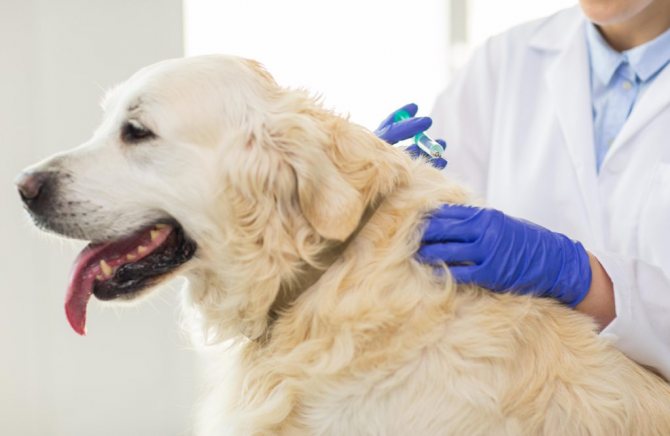

If the head of the parasite has come off the body, it must be removed. They do this as a splinter withdrawal:
- Treat the work area and fine needle with any disinfectant.
- Anesthetize the area of skin under which the head of the tick is located. To do this, you can enter subcutaneously Novocaine or use the spray "Lidocaine".
- Use a needle to carefully remove the remains of the parasite.
- Disinfect the wound.
In some situations, the insect head is so deep under the skin that it is not possible to remove it on its own. In this case, it is recommended to entrust this procedure to a veterinarian who will make a small incision and remove the remnants of the tick.
The correct algorithm for removing a tick from a dog


If you still manage to find a tick, then you can proceed as follows: go to a veterinary clinic or start removing the tick at home on your own, adhering to certain rules. Naturally, the first option is the most suitable, since the specialists will not only pull out the tick, but also analyze it. Unfortunately, this is not always possible, since the clinic may be located at a considerable distance, and there may not be any transport at that moment. In this case, you will have to remove the tick yourself.
Such skills can be useful, since no animal is immune from the attack of ticks and other parasites. By the way, ticks are extracted from humans according to the same principle. But here you need a clear order of actions, otherwise the consequences can be very unpredictable.
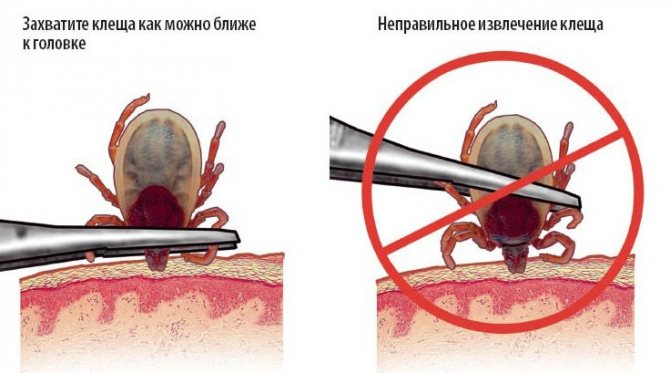

So:
- Better to help cope with a tick special tweezers, which are sold in pharmacies, both human and veterinary. His grip is made at a right angle. The grip is put on the body of the parasite sticking out of the body of the animal. When the tweezers begin to turn in one direction or the other, the tick is easily removed with this grip without any damage. After that, the tick should be returned for analysis.
- Ordinary tweezers will also work to remove the tick, if there is no special one. To do this, the jaws of the tweezers should be placed horizontally, or, in other words, parallel to the animal's body, since the tick can be anywhere, but not at an angle. Sponges of tweezers pry on the parasite at the point of entry of its head into the body of the animal. You cannot take him by the body, as you can crush him, which is undesirable. Firmly holding the tick, the tweezers turn in any direction, after which it falls away from the body. You cannot pull the tick up, as you can break the parasite, and the head with the proboscis will remain in the dog's body.
- If there are no such tools, you will have to pull them out with your fingers. To do this, wrap your fingers with a piece of clean cloth or bandage. Capture the parasite as close as possible to the point of entry into the animal's body. After that, the tick must be twisted, but in no case should it be pulled up and, moreover, should not be pulled. The fact is that the tick is reliably held inside by the claws and any sharp upward movement leads to the separation of its body from the head.
- After successfully getting rid of the parasite from the dog, the wound must be disinfected with any antiseptic or hydrogen peroxide, and maybe even alcohol-containing liquids.
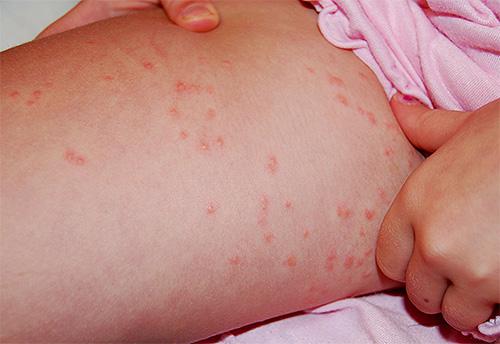

On a note! If you moisten the tick with an alcohol solution, it will be much easier to remove the tick. It is better not to use any other formulations, as this can only harm.
How to remove the parasite?
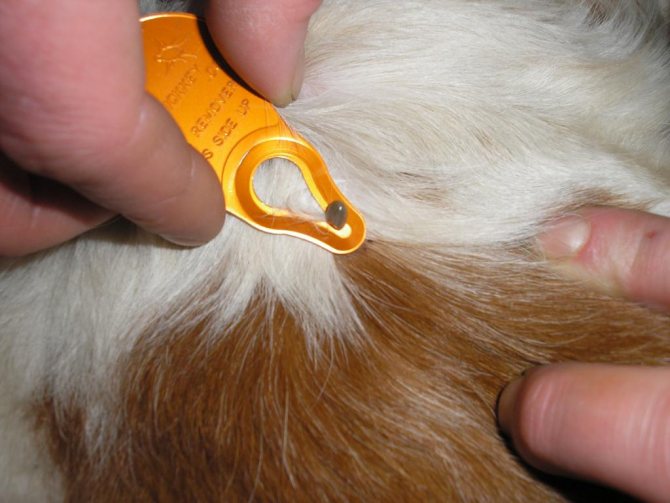

You should not try to unhook the tick from the dog without a clear understanding of how to properly carry out this procedure. Inappropriate actions can lead to the fact that his head remains under the skin of the dog, which is extremely dangerous for his health. Having found that an animal has bitten such an insect, it is recommended that you first study how to remove it correctly at home. If the owner of the dog is not confident in his abilities, it is better not to try to remove the parasite at home, but to entrust its removal to the veterinarian.
Pretreatment of animal skin and preparation of instrumentation
Intending to pull the bloodsucker out of the pet's body, you need to process the area of the skin into which it stuck. For this purpose, it is recommended to use an oily or alcohol-containing liquid: any oil available in the house, gasoline, kerosene, engine oil, solid oil, medical alcohol, vodka. When using flammable substances, it is necessary to observe increased precautions. In order not to burn the skin of the animal and not to provoke an allergic reaction, they must be applied in small quantities.
Common mistakes when removing a tick
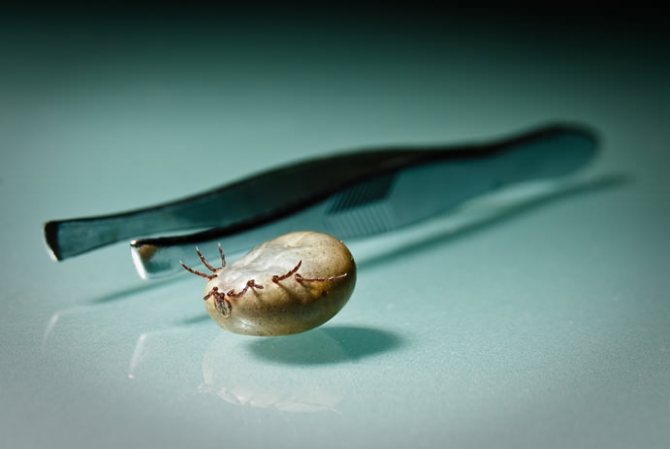

Incorrect actions in the case of an attempt to remove a tick from the dog's body lead to disastrous results, since infection is guaranteed. So, what not to do:
- According to many, if a drop of some kind of oil is applied to the tick, the tick will get out on its own, since oxygen is blocked for it. Indeed, it is possible for a tick to shut off its breathing, but it will not get out, but rather die, and remain stuck in the body of the animal. But as a result of death, the entire contents of the proboscis will be in the wound, along with all kinds of pathogens.
- The use of other liquids, such as kerosene, gasoline, etc., leads to the same result, which will kill the tick on the animal's skin.
- If, as a result of pulling out, a rupture of the parasite is obtained, then the result is the same: the parasite dies, and all pathogens enter the bloodstream of the animal. Such a result does not bode well either.
- In addition, there is another side of the coin: a damaged tick, as well as a tick doused with kerosene or gasoline, is unlikely to be taken for analysis. In this case, you will have to rely only on luck and a happy outcome, since not every bite leads to infection.
If the tick is not removed
The tick bite itself does not pose a danger to the dog if the tick is not infected. If a tick is infected, its saliva contains pathogens. Not all ticks are carriers of the infection, but still this percentage is high. You shouldn't risk your dog's health. The best option is to remove the tick before it has drunk on the dog's blood.
It is also not recommended to wait for the tick to fall off on its own. These parasites are carriers of very dangerous diseases and a serious infectious process can begin in the dog. If not treated properly, a tick infestation can be fatal to the dog.
Actions after removing the tick
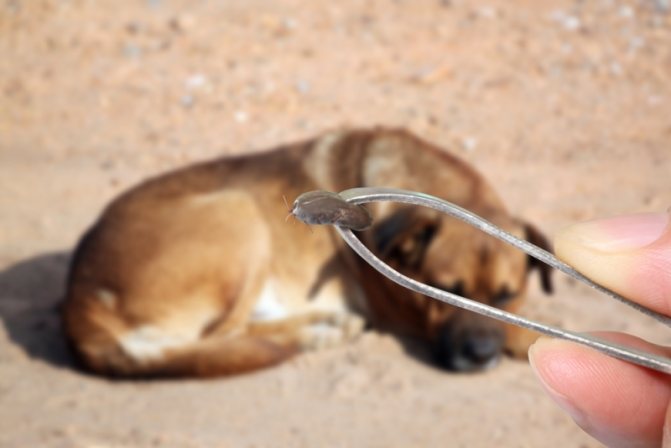

After removing the parasite from the dog's body, you need to decide what to do with it next. At the same time, every day you need to monitor the behavior of the animal. Therefore:
- The ideal option is to transfer the parasite for research to a special service, if it was possible to remove it without damage, alive. This is the only way to find out if the tick is the carrier of such terrible ailments.
- To keep the tick, it must be placed in a small container and tightly closed, but so that there is air access to it.
- During the first 2 days, you must fulfill your intentions and take the tick for analysis.
- If this is not possible, then it is better to destroy the tick. The best option is to burn the parasite.
- The same should be done with the damaged parasite.
After that, especially in the first couple of days, it is necessary to closely monitor the condition of the four-legged friend. If during this period the dog began to show an unwillingness to play, refuses to eat, especially from the one that she often begs for, and even more so when the dog begins to vomit and vomiting appears, these are signs of developing piroplasmosis. In this case, not a minute can be lost.
What to do with the tick next?
After removing the parasite that has stuck in the dog, you need to place it in a glass container and take it to the laboratory for research.Such a measure will make sure that the dog is not threatened by any dangerous disease, which may be carried by a tick. If it turns out that the insect is infected, it is recommended to show the pet to the veterinarian as soon as possible.
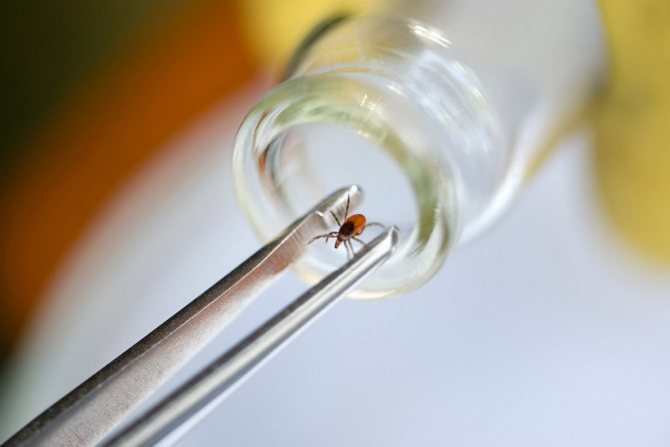

Be very careful when removing the parasite. It should be borne in mind that only intact insects are accepted for research. When placing the tick in a glass container, it must not be allowed to die. To prevent him from suffocating in a sealed vessel, it is recommended to put damp cotton wool, a rag or a paper napkin on its bottom. As a container for transporting the parasite, not only a glass jar, but also a small plastic bag or plastic bottle will fit. The main thing is to make sure that the insect does not leave the container.
How to better protect your dog from tick attack
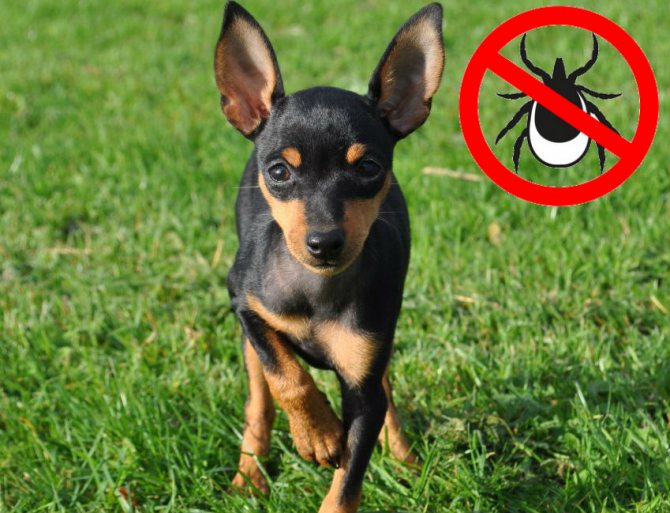

Since the dog loves to walk in the grass, it is not difficult for him to pick up a tick. The tick clings to the animal's fur without any problems, and it only needs to get to the body itself. As a rule, the tick clings to the lower part of the body, although it all depends on the height of the dog. After the tick hits the animal, it slowly begins to look for a suitable place to bite.
Starting in spring and ending in autumn, almost all dogs run the risk of picking up a tick, regardless of what kind of grass it runs on, whether it is grass outside the city, in the country, or in a city park. Ticks can be found both there and there. Therefore, during this period, it is very important to carry out regular treatments of animals with acaricides, as well as repellents.
Quite often, ticks infect treated dogs. Either these are not effective drugs, or the ticks managed to develop immunity against certain chemicals. To reduce the risk of infection of a dog with piroplasmosis, it is better to adhere to a number of rules. For example:
- Visit a veterinary clinic and consult with specialists which drugs are best for treating a dog, and which drugs have lost their effectiveness.
- Currently, experts recommend an integrated approach to solving this problem. It is better to protect the dog according to the principle: drops + spray, drops + protective collar, collar + spray.
On a note! Regular dog jumpsuit is able to protect the animal while walking. It reliably protects exactly those places where the tick can grab.
Bloodsucker detection
Before removing a tick from a dog, you need to find it. To do this, after each walk, check your pet's coat and look for a parasite in it. If it is possible to find a bloodsucker before he starts his meal, then he is immediately removed. This will help avoid the many negative effects of a bite.
Favorite places
Ticks try to attach to the animal in those places where the thinnest and most delicate skin is. This helps them use less energy to bite and get to the blood faster.
The most favorite places of bloodsuckers:
- groin area;
- armpits;
- the area behind the ears;
- gaps between the fingers;
- the chin.
Symptoms of defeat
If the owner failed to remove the tick from the dog before the bite, then negative consequences can be expected. Most often, veterinarians are approached by people who bring their pets with pyroplasmas in their blood. To avoid such serious consequences, it is necessary to carefully monitor the health and condition of the dog. If you find the slightest symptoms of tick damage, you should contact a specialist as soon as possible. This will help prevent kidney, liver and spleen diseases.
The main signs of a tick bite:
- lethargy of the pet and complete apathy;
- dark red urine;
- rapid heartbeat and breathing;
- lack of appetite;
- increased body temperature (up to + 41 ° C and more).


One of the most obvious signs of a mite on a dog's skin is sickness and apathy.
If the head came off
To remove the remains of the parasite, you must:


Toothpaste for dogs - a review of manufacturers and the best products for cleaning dog teeth at home (85 photos and videos)

Shoes for dogs - sizes, features of application and training for shoes of different breeds (85 photos)


How to cut dogs - step-by-step instructions for beginners how to cut correctly at home (video + 90 photos of haircuts)
- find a black dot on the dog's skin;
- disinfect this place and inject an anesthetic;
- heat the needle and carefully pull out the head;
- disinfect the wound again.


In extreme cases, if the tick has pouted, you can remove it from the dog with your fingers. Only this must be done as carefully as possible so as not to crush the insect.
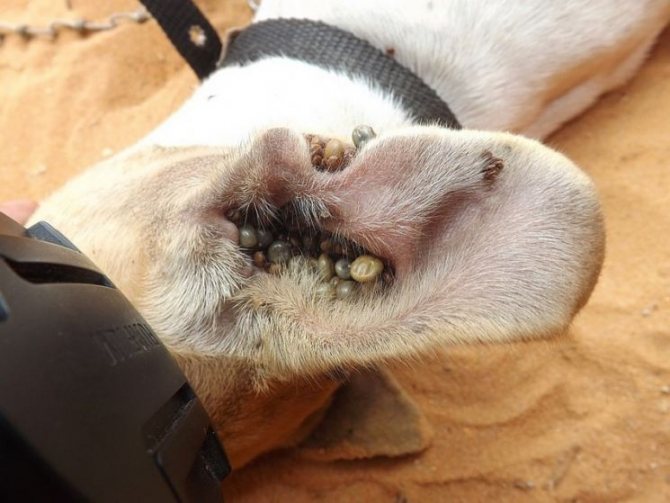

We rotate the body of the parasite in a circle, as if rubbing it lightly. He doesn't like such movements, and he will eventually crawl out from under his skin.
Caveats
Do not touch the parasite with unprotected hands. It is better to wear gloves before the procedure, as the tick can carry encephalitis, which is dangerous to humans.


Also, do not squeeze the tick when trying to pull it out. With strong pressure, the parasite can inject saliva into the pet's bloodstream.
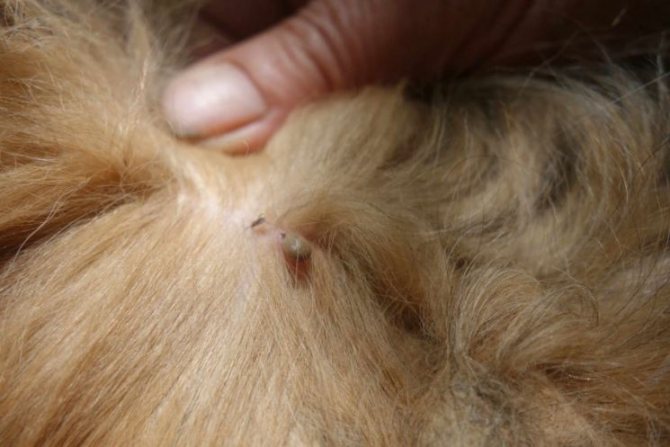

And remember: after you have pulled out the insect, take it for examination. This will help determine whether it is a disease carrier and prevent infection in time.


Do I need to take a tick for analysis?
A tick removed from a dog does not need to be taken for analysis. This practice is relevant for situations when a tick is removed from a person, and there is a risk of contracting the bitten with tick-borne encephalitis or borreliosis. In special laboratories in the body of a tick, they can detect the causative agent of infection, or confirm its absence.
The causative agents of the most dangerous infections for dogs (piroplasmosis, for example) are not detected in laboratories. Theoretically, this is possible, but in practice, due to the lack of demand and demand, laboratories do not have the appropriate tools, first of all, markers specific for babesia (pathogens of pyroplasmosis). Dogs do not get sick with tick-borne encephalitis.
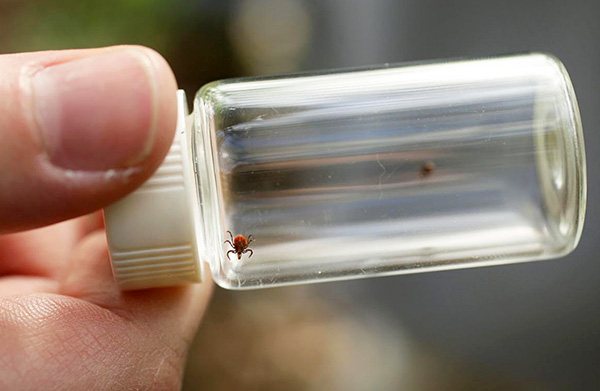

Sometimes a frightened inexperienced dog breeder, in consultation with a veterinary clinic, is offered to donate blood from a dog that has just been bitten by a tick for analysis for piroplasmosis. This is an exclusively commercial move, useful only for the clinic itself.
In the first days after a tick bite, even when a dog is infected with piroplasmosis, babesia cannot be detected in its peripheral blood. Consequently, the analysis will in any case show a negative result. Many clinics that offer this service are modestly silent about this, and the panicked dog owner does not even think about it. Moreover, the price of such a service can sometimes exceed 1,500 rubles.
On a note
Piroplasmosis infection can be diagnosed by a blood test approximately 10-15 days after a tick bite. The incubation period of the disease lasts about the same. That is, the period when it makes sense to do the analysis roughly coincides with the period when the first symptoms of the disease should appear. For this reason, an analysis may be required only if there is a suspicion of already developed piroplasmosis.

